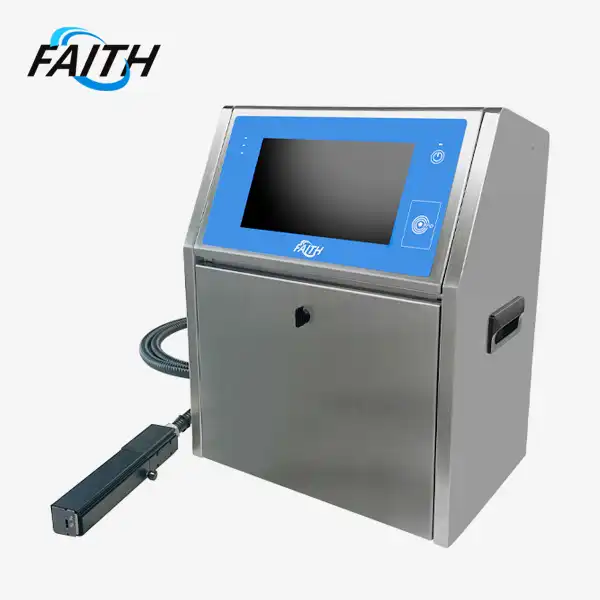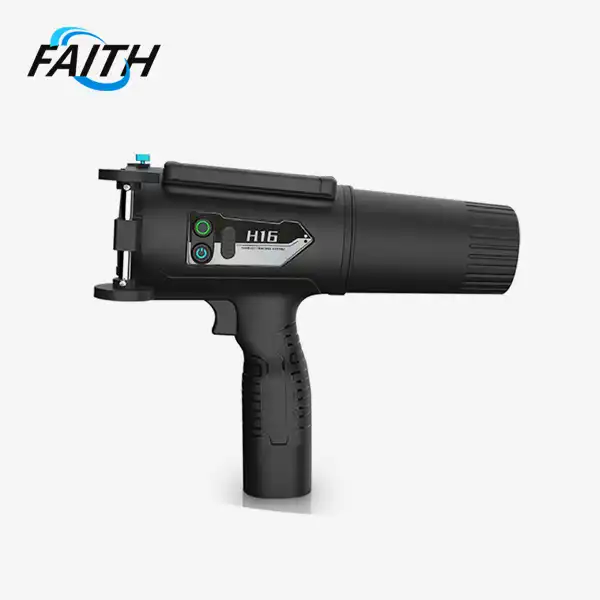Small Character Inkjet Coders: Balancing Speed and Quality
Small character inkjet coders play a crucial role in modern manufacturing and packaging processes, offering a delicate balance between printing speed and quality. These versatile devices are essential for high-speed production lines across various industries, from food and beverage to pharmaceuticals and electronics. Achieving the optimal equilibrium between rapid printing and crisp, legible output involves fine-tuning multiple aspects of the printing process, including print head technology, ink formulation, and precise machine settings.
The Technology Behind Small Character Inkjet Coders
At the heart of small character inkjet coding lies sophisticated technology that enables these devices to perform at high speeds while maintaining print quality. The most common type of small character inkjet coder utilizes Continuous Inkjet (CIJ) technology, renowned for its versatility and speed.
Continuous Inkjet (CIJ) Technology
CIJ technology operates on a simple yet ingenious principle. It generates a continuous stream of ink droplets, some of which are electrostatically charged and deflected to create the desired pattern on the substrate. The speed of faith printer like CIJ printers makes them ideal for high-volume production environments where every second counts. However, this velocity can sometimes come at the cost of print quality, especially when pushed to extreme limits. Manufacturers must carefully calibrate their systems to find the sweet spot between speed and clarity.
Print Head Design
The design of the print head is paramount in determining both the speed and quality of the output. Modern small character inkjet coders feature precision-engineered nozzles that can produce extremely fine droplets of ink. These minuscule droplets allow for higher resolution printing, resulting in sharper text and more intricate designs.
Advanced print heads also incorporate multiple nozzle arrays, enabling simultaneous printing of multiple lines or complex patterns without sacrificing speed. This multi-line capability is particularly valuable in industries where products require extensive coding information, such as batch numbers, expiration dates, and traceability data.
Ink Formulation and Delivery
The ink used in small character inkjet coders is a critical component that affects both print speed and quality. High-performance inks are formulated to dry rapidly, preventing smudging even at high line speeds. These fast-drying properties are essential for maintaining legibility on non-porous surfaces like plastics and metals.
Moreover, the ink delivery system must be precisely controlled to ensure consistent droplet formation. Pressure regulation and temperature control play vital roles in maintaining optimal ink viscosity, which directly impacts print quality and reliability. Some advanced systems even incorporate real-time viscosity monitoring and adjustment to compensate for environmental changes during production runs.
Optimizing Performance: Balancing Act of Speed and Quality
Achieving the perfect balance between speed and quality in small character continuous inkjet coding is an ongoing process that requires careful consideration of various factors. Manufacturers must weigh the demands of their production lines against the need for clear, durable markings.
Print Resolution and Droplet Size
One of the primary levers for adjusting the speed-quality balance is the print resolution. Higher resolutions generally produce sharper, more defined characters but require more time to print. Conversely, lower resolutions allow for faster printing but may result in less crisp output.
Droplet size is closely related to resolution and plays a significant role in determining print quality. Smaller droplets can create finer details but may require multiple passes to achieve sufficient contrast, potentially slowing down the printing process. Larger droplets offer better coverage and can be applied more quickly but may lack the precision needed for intricate designs or small text.
Substrate Considerations
The material being printed on significantly influences the balance between speed and quality. Porous surfaces like cardboard tend to absorb ink quickly, allowing for faster printing speeds without sacrificing legibility. Non-porous materials such as glass or plastic may require slower speeds or specialized inks to ensure proper adhesion and prevent smearing. Some small character inkjet coders offer adjustable settings to optimize performance for different substrates. This flexibility allows manufacturers to fine-tune their coding process for various products without compromising on speed or quality.
Environmental Factors
Environmental conditions in the production area can have a substantial impact on inkjet coding performance. Temperature and humidity fluctuations can affect ink viscosity and drying time, potentially leading to quality issues if not properly managed. Advanced small character CIJ printers often incorporate environmental sensors and automatic adjustment mechanisms to maintain consistent print quality across varying conditions. These adaptive systems help ensure that the balance between speed and quality remains stable throughout production shifts.
Industry Applications and Case Studies
The versatility of small character inkjet coders makes them indispensable across a wide range of industries. Each sector presents unique challenges in balancing speed and quality, leading to innovative solutions and best practices.
Beverage Industry
In the fast-paced beverage industry, small character inkjet coders are tasked with applying date codes and lot numbers to bottles and cans at breakneck speeds. Some high-performance systems can mark up to 800 meters of product per minute while maintaining legible prints.
To achieve this feat, beverage manufacturers often employ specialized fast-drying inks and optimize their printer settings for the specific container materials. The curvature of bottles and cans presents an additional challenge, requiring precise droplet placement to ensure consistent quality around the circumference of the container.
Pharmaceutical Packaging
The pharmaceutical industry demands impeccable print quality to ensure that critical information such as expiration dates and batch codes are clearly legible. At the same time, high-volume production lines require rapid coding to meet output targets. To balance these competing needs, pharmaceutical manufacturers often utilize high-resolution small character inkjet coders capable of producing crisp, small text. Some systems incorporate vision inspection technology to verify print quality in real-time, allowing for immediate adjustments if any issues are detected.
Electronics Manufacturing
In electronics manufacturing, small character inkjet coders are used to apply serial numbers and other identifying marks to components and packaging. The miniature nature of many electronic parts necessitates extremely fine print, pushing the limits of inkjet technology. To meet these demands, electronics manufacturers may opt for specialized micro-character printing systems that can produce legible text as small as 0.6mm in height. These systems often operate at slower speeds compared to standard small character inkjet coders, prioritizing precision over raw throughput.
Food Packaging
The food packaging industry presents a diverse range of substrates and environmental conditions, challenging small character inkjet coders to maintain consistent performance. From frozen foods to hot-filled containers, coding systems must adapt to varying temperatures and surface conditions. Many food manufacturers employ modular coding solutions that can be quickly reconfigured for different product lines. This flexibility allows them to optimize the balance between speed and quality for each specific application, ensuring efficient production without compromising on code legibility.
Frequently Asked Questions
Q: How fast can small character inkjet coders print?
A: Advanced small character inkjet coders can print at speeds up to 1,000 meters per minute, depending on the specific model and application requirements.
Q: What factors affect print quality in small character inkjet coding?
A: Print quality is influenced by factors such as ink formulation, print head design, substrate material, environmental conditions, and printer settings like resolution and droplet size.
Q: Can small character inkjet coders print on any surface?
A: While versatile, these coders may require specialized inks or settings for optimal performance on different materials. Most can print on a wide range of surfaces including paper, cardboard, plastic, metal, and glass.
Conclusion
Small character inkjet coders have become indispensable tools in modern manufacturing, offering a remarkable balance between high-speed printing and quality output. As technology continues to evolve, we can expect even more advanced solutions that push the boundaries of what's possible in industrial coding and marking.
For businesses seeking to optimize their production lines with state-of-the-art small character inkjet coding solutions, Shenyang Faith Technology Co., Ltd. offers expert guidance and cutting-edge products. To learn more about China CIJ date code printer suppliers and traceability systems can benefit your operations, please contact us at sale01@sy-faith.com.
References
1. Johnson, M. (2022). Advancements in Small Character Inkjet Coding Technology. Journal of Industrial Printing, 45(3), 112-128.
2. Smith, A. & Brown, L. (2021). Balancing Speed and Quality in High-Volume Production Environments. Manufacturing Technology Quarterly, 18(2), 76-89.
3. Chen, Y. et al. (2023). Ink Formulation Innovations for Rapid-Dry Applications in Small Character Coding. Industrial Chemistry Review, 56(4), 301-315.
4. Patel, R. (2022). Environmental Factors Affecting Inkjet Coding Performance: A Comprehensive Study. Journal of Packaging Science, 39(1), 45-60.
5. Williams, T. & Garcia, E. (2023). The Future of Small Character Inkjet Coding: Trends and Predictions. International Journal of Marking and Coding Technologies, 12(2), 189-204.
Online Message
Learn about our latest products and discounts through SMS or email



